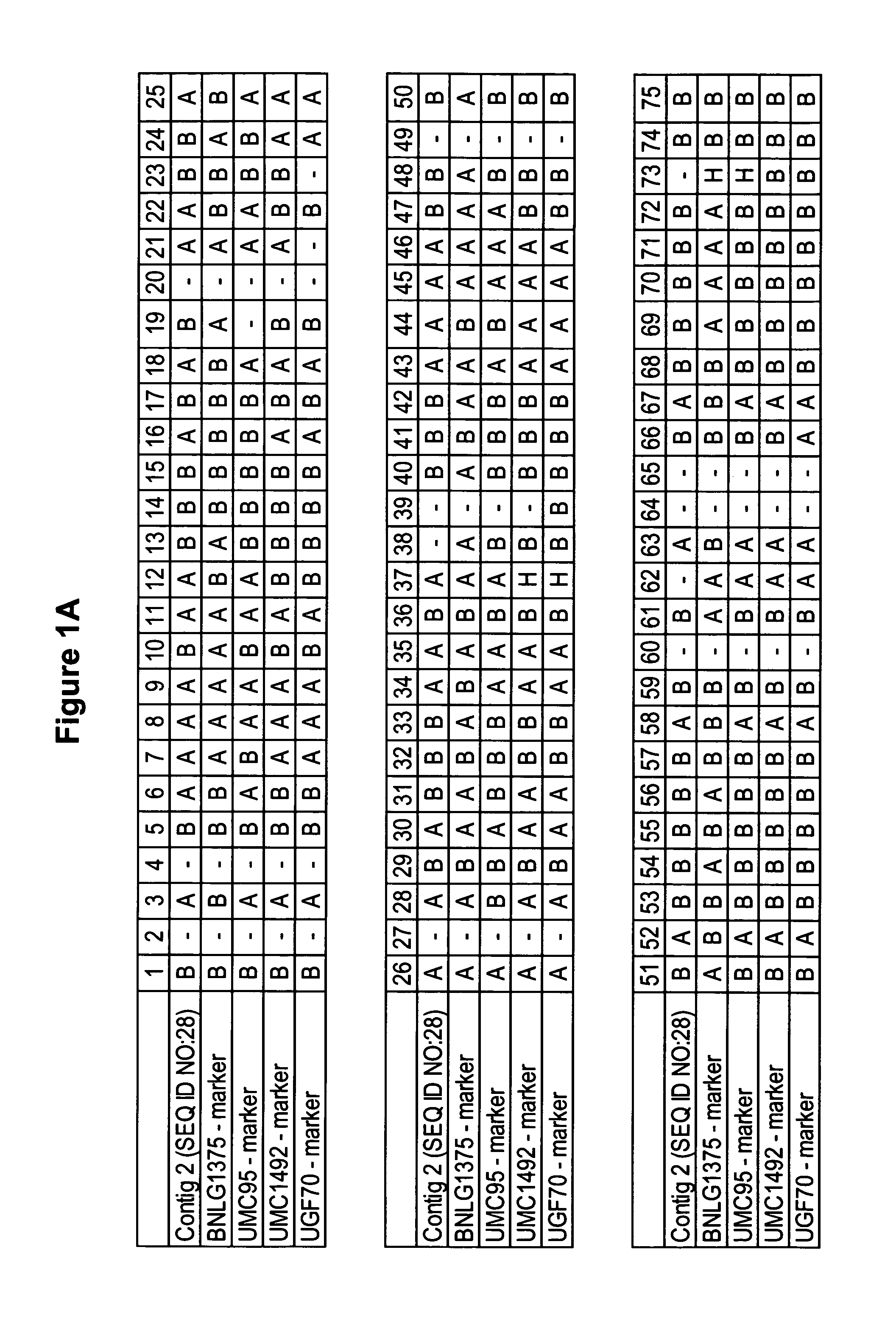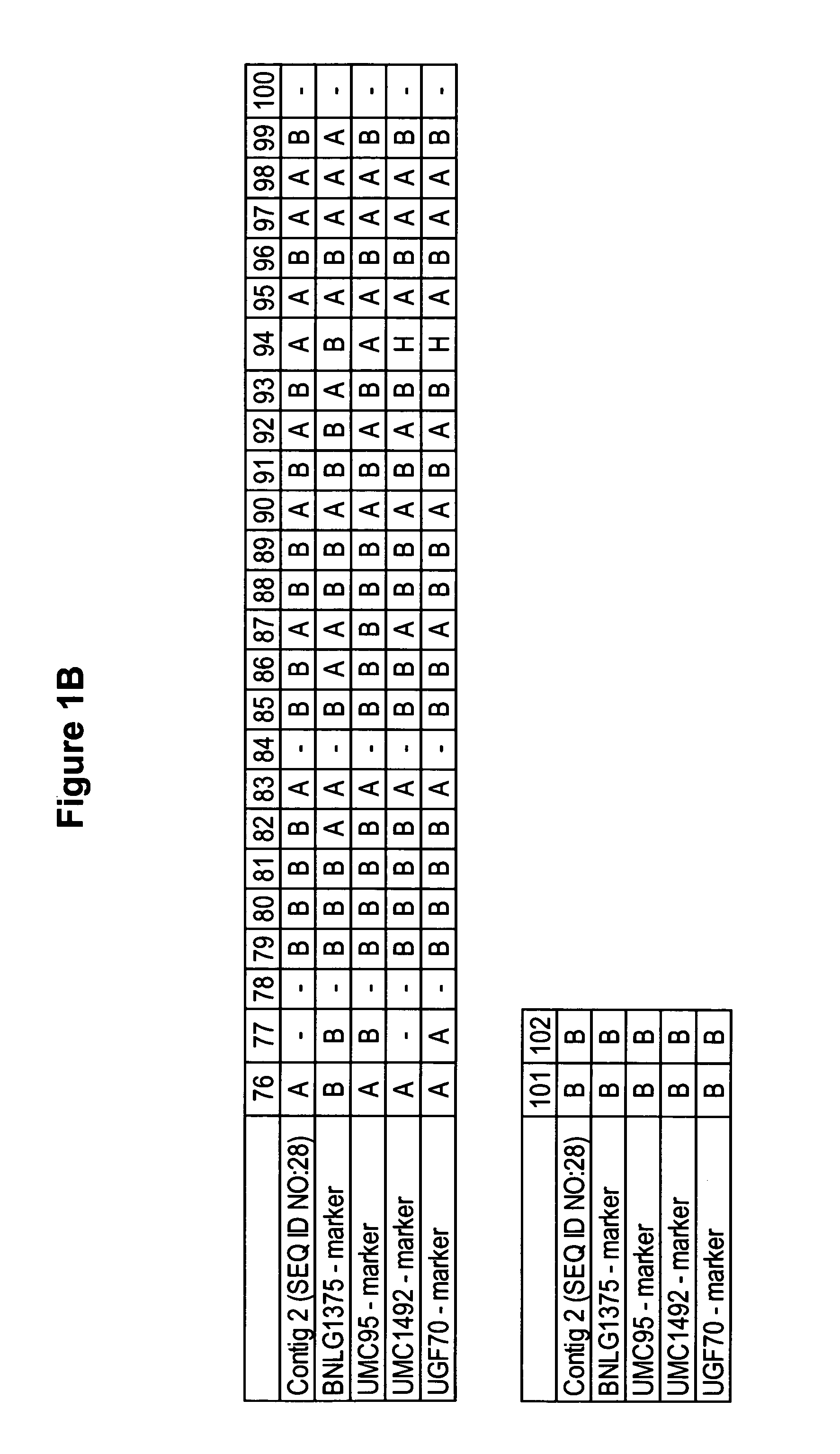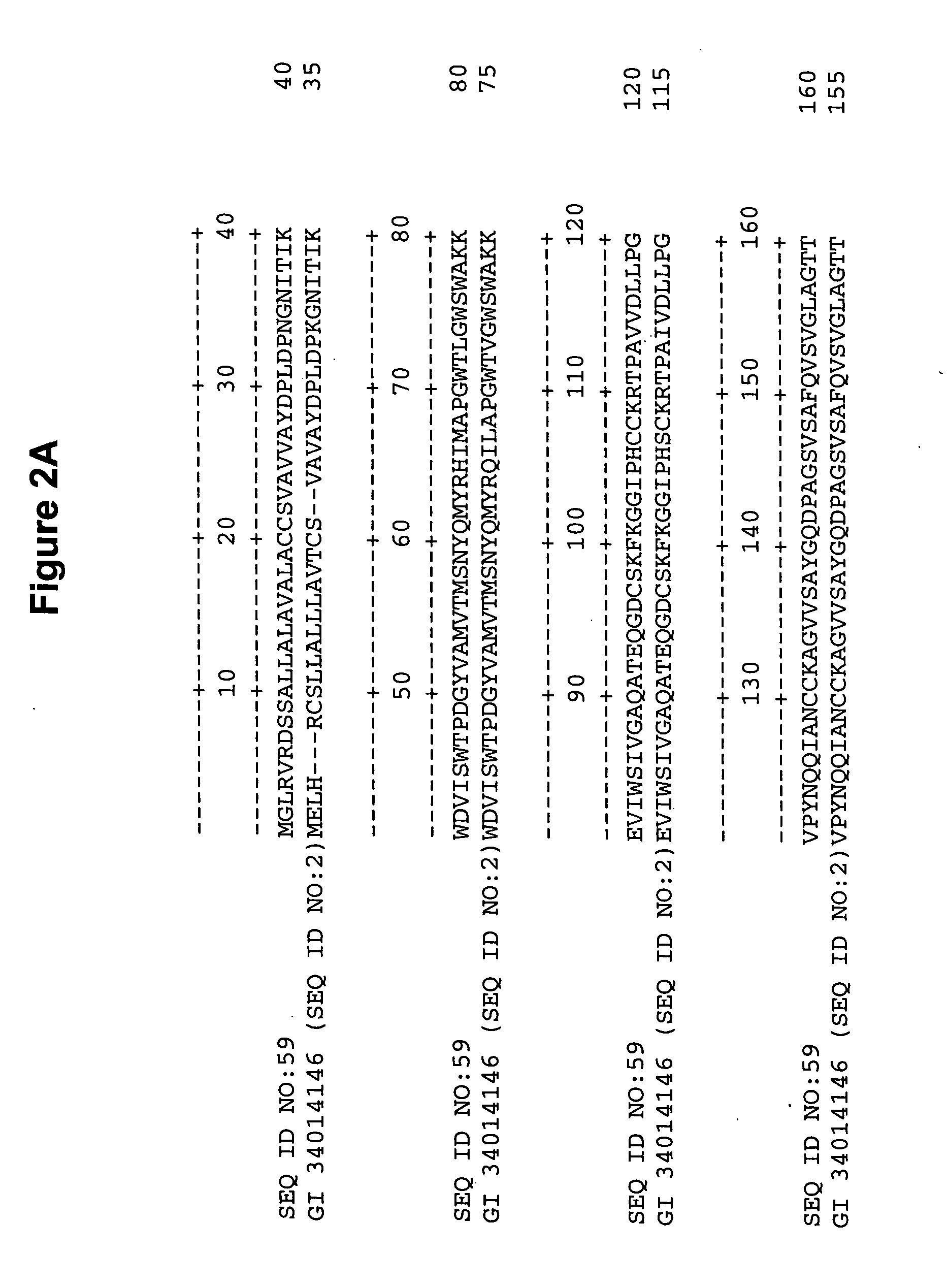Brittle stalk 2 polynucleotides, polypeptides and uses thereof
- Summary
- Abstract
- Description
- Claims
- Application Information
AI Technical Summary
Benefits of technology
Problems solved by technology
Method used
Image
Examples
example 1
Preparation of cDNA Libraries and Sequencing of Entire cDNA Clones
[0177] cDNA libraries representing mRNAs from various maize tissues were prepared as described below. The characteristics of the libraries are described below in Table 1.
TABLE 1cDNA Libraries from CornCloneLibraryTissue(SEQ ID NO:)cbn10Corn (Zea mays L.) developingcbn10.pk0006.f4kernel (embryo and endosperm;(SEQ ID NO: 8)10 days after pollination)cdr1fCorn (Zea mays, B73)cdr1f.pk006.d4:fisdeveloping root (full length)(SEQ ID NO: 3)cdt2cCorn (Zea mays L.) developingcdt2c.pk003.k7tassel(SEQ ID NO: 9)cdt2c.pk005.i7a(SEQ ID NO: 17)cen3nCorn (Zea mays L.) endospermcen3n.pk0203.g1astage 3 (20 days after(SEQ ID NO: 4)pollination) normalized*cest1sMaize, stalk, elongationcest1s.pk003.o23zone within an internode(SEQ ID NO: 5)cgs1cCorn (Zea mays, GasPE Flint)cgs1c.pk001.d14asepal tissue at meiosis about(SEQ ID NO: 10)14-16 days after emergence(site of proline synthesisthat supports pollen developmentcr1nCorn (Zea mays L.) ro...
example 2
Identification of cDNA Clones
[0183] Search for maize cDNA sequences homologous at the nucleic acid and amino acid level to the rice BRITTLE CULM1 (BC1) sequence (SEQ ID NO:1 is the complete coding sequence of the BRITTLE CULM1 gene from rice (NCBI General Identifier No. 34014145); SEQ ID NO:2 is the amino acid sequence of BRITTLE CULM1 from rice (NCBI General Identifier No. 34014146)) was conducted using BLASTN or TBLASTN algorithm provided by the National Center for Biotechnology Information (NCBI) against DuPont's internal proprietary database (Basic Local Alignment Search Tool; Altschul et al., J. Mol. Biol. 215:403-410 (1993); Altschul et al., Nucleic Acids Res. 25:3389-3402 (1997)). DuPont's internal database showed several ESTs homologous at the nucleic acid and protein level, with varying levels of homology (see Table 2). For convenience, the P-value (probability) of observing a match of a cDNA sequence to a sequence contained in the searched databases merely by chance as ca...
example 3
Identification of Maize Genomic Sequences Related to Rice bc1 Gene
[0186] Search for maize genomic sequences homologous at the amino acid level to the BRITTLE CULM1 (BC1) sequence (SEQ ID NO:2; NCBI General Identifier No. 34014146) was also conducted using TBLASTN algorithm provided by the National Center for Biotechnology Information (NCBI) against the TIGR Maize genomic assemblies (The TIGR Gene Index Databases, The Institute for Genomic Research, Rockville, Md. 20850; Quackenbush et al., J. Nucleic Acids Res. 28(1):141-145 (2000)). When the sequences were compared a few high scoring hits were identified (Basic Local Alignment Search Tool; Altschul et al., J. Mol. Biol. 215:403-410 (1993); Altschul et al., Nucleic Acids Res. 25:3389-3402 (1997)). These hits are listed in Table 3 with their corresponding P values.
TABLE 3BLAST Results for Maize SequencesHomologous to Rice bc1 GeneBlast pLog ScoreTIGR Assembly NumberTBLASTNAZM2_14907 SEQ ID NO: 19165AZM2_36996 SEQ ID NO: 2069AZM2_1...
PUM
| Property | Measurement | Unit |
|---|---|---|
| Fraction | aaaaa | aaaaa |
| Fraction | aaaaa | aaaaa |
| Fraction | aaaaa | aaaaa |
Abstract
Description
Claims
Application Information
 Login to View More
Login to View More - R&D
- Intellectual Property
- Life Sciences
- Materials
- Tech Scout
- Unparalleled Data Quality
- Higher Quality Content
- 60% Fewer Hallucinations
Browse by: Latest US Patents, China's latest patents, Technical Efficacy Thesaurus, Application Domain, Technology Topic, Popular Technical Reports.
© 2025 PatSnap. All rights reserved.Legal|Privacy policy|Modern Slavery Act Transparency Statement|Sitemap|About US| Contact US: help@patsnap.com



